The Death of Elmer Ellsworth: A Union Martyr and the First Casualty on Virginia Soil
On This Day – May 24, 1861
In the early days of the Civil War, long before the nation had fully grasped the scale of the conflict to come, the death of one young Union officer sent shockwaves through the North and solidified a powerful symbol of patriotic sacrifice. That officer was Colonel Elmer Ephraim Ellsworth, a 24-year-old who became one of the first Union casualties of the war—and the first to die on Confederate soil.
Ellsworth was a charismatic and well-known figure, especially in New York, thanks to his leadership of the Chicago Zouaves—a precision drill team styled after French Algerian units. He had also worked closely with Abraham Lincoln, studying law in Springfield, Illinois, and assisting in Lincoln’s 1860 presidential campaign. Their friendship was personal and deep, and Lincoln saw great promise in the young man.
A Flag and a Fatal Encounter
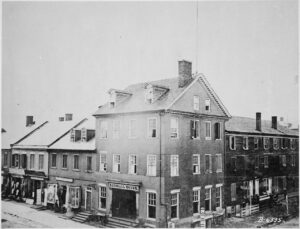
Determined to remove this visible symbol of rebellion, Ellsworth ascended the stairs of the inn, pulled down the flag, and began descending. As he did, he was met by James W. Jackson, the proprietor of the inn and a fervent secessionist. Jackson fired a shotgun at point-blank range, killing Ellsworth instantly. In the same moment, one of Ellsworth’s soldiers, Corporal Francis E. Brownell, shot and killed Jackson in retaliation.
A Nation Mourns
News of Ellsworth’s death spread rapidly, and the public reaction in the North was immediate and emotional. President Lincoln was said to be deeply affected—more than by any other wartime death. He reportedly wept openly at the loss of his young friend and ordered that Ellsworth’s body lie in state at the White House.
The young colonel became a Union martyr almost overnight. His image appeared on broadsides, sheet music, recruiting posters, and mourning envelopes. Songs were written in his honor. A gold medal found on his chest bore the Latin inscription: “Non solum nobis, sed pro patria”—“Not for ourselves, but for our country.”
An obituary in the New York Times (May 25, 1861) captured the sentiment:
“…his death will be regarded as a martyrdom, and his name will be enrolled upon the list of our country’s patriots.”
Competing Martyrdoms
Even as Ellsworth was lionized in the North, efforts were made in the South to elevate James W. Jackson as a hero of Southern independence. A lengthy book published in 1862 bore the dramatic title:
“Life of James W. Jackson, the Alexandria hero, the slayer of Ellsworth, the first martyr in the cause of southern independence…”
This attempt at Southern counter-martyrdom highlighted the sharp ideological divide in the nation—each side claiming noble sacrifice for their cause.
The Legacy of a Fallen Flag
After Ellsworth’s death, the Confederate flag he had removed became a relic. It was returned with his body to New York, where mourners cut pieces from it to keep as mementos. Eventually, the remains of the flag were preserved, and today it resides in the New York State Military Museum.
Artifacts associated with Ellsworth—including his coat and pants, images by Mathew Brady, Currier & Ives lithographs, and a sketch of his casket lying in state—remain preserved in national archives and museums. The story of his death was visually chronicled as much as it was written, a testament to his impact on the collective Northern consciousness.
Elmer Ellsworth’s name may not be as widely known today, but in 1861, he became an icon of Union resolve—one whose life and tragic death helped galvanize a nation preparing for war.
Classroom Connection:
Elmer Ellsworth’s death offers a human story that brings the abstract causes of the Civil War into personal focus. Here are a few ideas for using this story in your classroom:
Discussion Questions
- Why do you think Ellsworth’s death had such a strong emotional impact on the North?
- How did both the Union and the Confederacy try to turn deaths like Ellsworth’s and Jackson’s into symbols? What does this tell us about how people create meaning during wartime?
- What does Ellsworth’s story reveal about the early days of the Civil War and the personal connections between political figures like Lincoln and military leaders?
Classroom Activities
- Primary Source Analysis: Use Ellsworth’s obituary or a Currier & Ives print as a primary source. Ask students to analyze how the imagery or language creates a sense of martyrdom or patriotism.
- Role Play/Debate: Have students represent different newspapers (Union vs. Confederate) and write or perform a news report on Ellsworth’s death from different perspectives.
- Artifact Exploration: Show students images of Ellsworth’s uniform or the preserved Confederate flag. Ask: What do these artifacts tell us about memory, symbolism, and the legacy of war?
- Creative Writing Prompt: Ask students to write a letter from the perspective of someone who witnessed Ellsworth’s funeral procession in Washington, D.C., or someone who cut a piece of the flag as a keepsake.

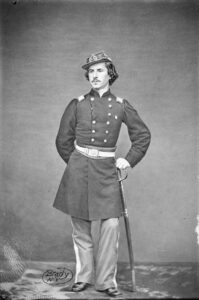
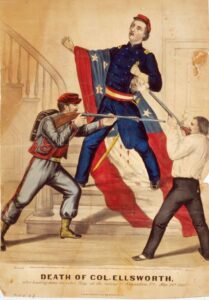
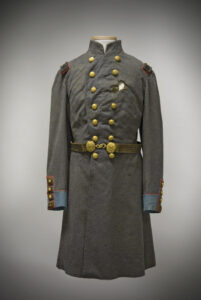
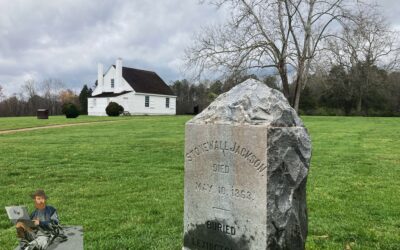
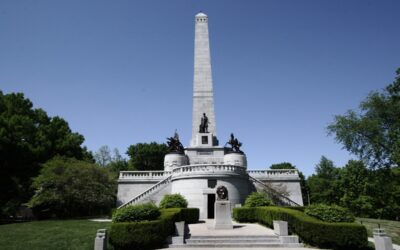
0 Comments